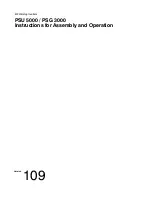
CMC Rescue, Inc.
|
A Z VORTEX User’s Manual
11
Using the AZ VORTEX
at an Edge
Using the AZ VORTEX at an edge is a
challenging set up location. This could be on
a cliff, rooftop, or a tank as shown in
Figure
10
. Practice on low parapets first before
heading to more exposed locations. Again,
be sure and attach a Tether Cord to the top
of the AZ VORTEX head and secure the unit
before moving to an edge or using. This cord
can be left in place during the operation and
then used while disassembling the device.
For clarity, the Tether Cord is not shown in
the example.
ADVANCED APPLICATIONS
It is usually quicker and safer to set up the AZ VORTEX with all three legs. Bipods and
monopods are inherently unstable. If you let go, the device falls over. If the resultant force does
not vector straight down the legs, the guy lines take additional loading and a guy line failure will
cause a collapse. For rescue teams already trained in and using improvised bipods and
monopods, the AZ VORTEX follows the same principles. The AZ VORTEX is easier to transport
and the set up does not require any lashing at the top. As well as attachment points for pulleys,
the AZ VORTEX head provides secure points for connecting guy lines.
TRAINING AND SAFETY
While a tripod is inherently stable when correctly loaded, A-Frames (bipods) and Gin Poles
(monopods) are inherently unstable. Adequate rigging is essential to prevent injury to subjects
and rescuers. Knowledge of advanced rigging, complex guying, and establishing adequate
anchors is essential. Several training organizations provide instruction on improvised high
directionals. For courses specific to the AZ Vortex contact:
CMC Rescue School
cmcrescue.com / (800) 235-5741 or (805) 562-9120
Ropes That Rescue
ropesthatrescue.com / (928) 282-7299
Figure 10





































